Divine Houses Overview
Divine Houses Overview
Entering into the Age of Chaos, nothing dramatic has changed with the individual power capacity of dieties. However, during the Age of Darkness, it became abundantly clear to virtually every god that D'Spayre could not truly be challenged without alliances. As such, various alliance hybrids came about and are burgeoning. Vorondil-Ares and Noxicuss-Ro'Shikara are two known hybrid alliances, but there are others and to truly create a gap in the armor of the Lords of Evil of the Dark Alliance, it is currently the only way. More information on the pantheons and other gods is below.
the Dark Alliance
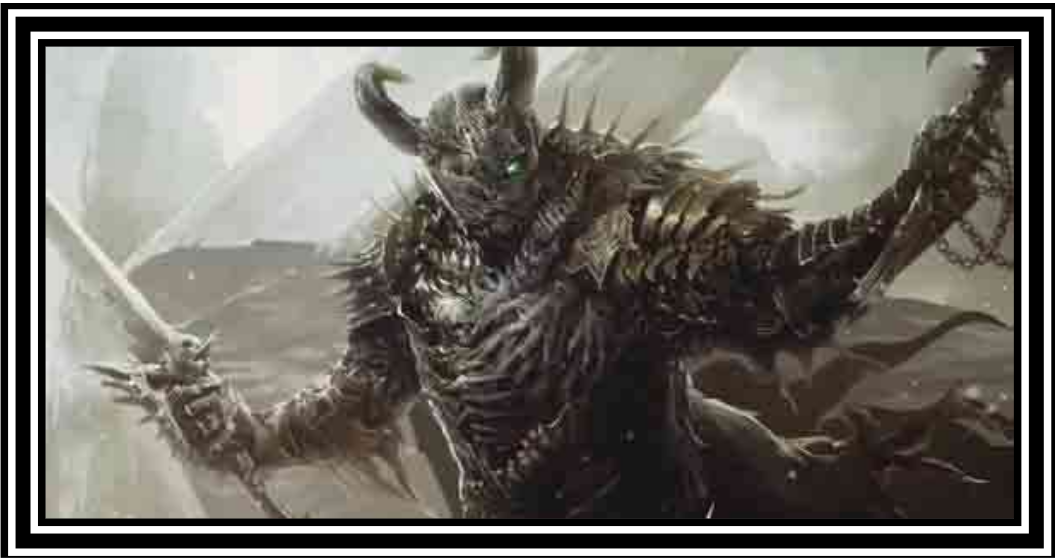
During the Age of Darkness, no single god wielded the power contained within D’Spayre, the Doomslayer and the divine house known as the Dark Alliance has been a more powerful aggregation of deities than has ever existed in the history of the Al’Akwannonian universe. Moving into the Age of Chaos, D'Spayre and the Dark Alliance remain the most powerful collection of deities, but there are challenges from multi-god alliances within other pantheons. Joining with D’Spayre are several other divine powers each who wields a level of power that would almost certainly enable them to bring about their own alliance of godly elements and stand at the head of a divine house themselves. Instead, aligning with D’Spayre, they have together brought a time of great trouble to the Prime and all Al’Akwannonian dimensions. Each deity represents various aspects of destruction, pestilence, darkness, black magic, undead and unadulterated evil. Each has proliferated into multiple aspects of their primary selves to provide hidden power to secret societies and cults in nearly every region and among almost every race on the planet. The style of worship that holds true is that followers worship in ways similar to ancient Celts of Earth and generally erect large, immobile idols where such rituals take place (e.g. – Stonehenge)
D’Spayre (the Doomslayer)
Power Ranking : Supreme God (Special)
Greater Deities : Asmodeus (the Black Lord), Null (the Living Darkness), Azagon (Lord of the Dead), Saturnine (Mistress of Pain), Incanus (the Dark Sword)
House of Stars

Under the guidance of the Star Father, the collection of gods known as the House of Stars, or Lords of Heaven stands against the Dark Alliance fighting a severely uphill battle. While Janus, has utilized his powers over the celestial bodies of the prime material universe to empower some of his priests with abilities to fight against undead with considerable power, the number of these priests are overwhelmed by the numbers and power displayed in the earthly realm by forces of D’Spayre. His daughter, Laurana and Lokoran, the Daymaker have also taken great strides to equip their followers to stand against the undead hordes, but more so than any of the Dark Alliance gods, Janus’ own son, Incanus, corrupted by the blade of dark power, has risen nearly to Janus’ level of power and stands against his father’s forces at every turn. On Al’Akwannon, the House of Stars is most influential in the northern Sunken Sea region, with strong temple presences in Morgana, Lor’Aserion, Cirdan and Isengrim as well as the Fang Lands. The style of worship is much like Islam, though not in its most strict and proper form, worshipers generally aim themselves toward the position of the Bright Moon (Kordis) and recite memorized verses aloud
Janus (the Star Father)
Power Ranking : Supreme God
Greater Deities : Laurana (Sister of Blades), Ishattar (the Suasive)
Median Deities : Lokoran (the Daymaker), Kishar (the All Knowing)
Lords of Olympus
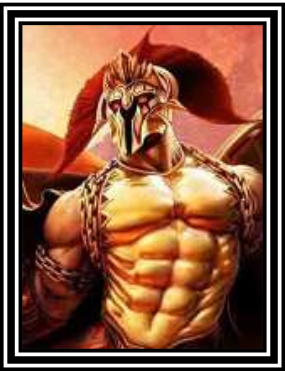
Once a mighty pantheon, the Lords of Olympus, or Children of Zeus are now without their patron father god Zeus himself, who has apparently been destroyed through events which precipitated from the Holocaust. The worship base has been decimated, but remains extremely strong in one center of worship; the State of Tynderius on the southern shore of the Sunken Sea. It has become a theocracy and is rooted firmly in the capital city. Now lead by Zeus’ brother Ares, Lord of War, the pantheon stays strong only through unity, though Ares has recently begun to cooperate with the servants of Vorondil, Lord of Ice. Nemesis is an ever present right hand to Ares while servants of Vulcan work to provide followers and priests with weapons, armor and other tools. Even the small of stature Avoreen has taken up the mantle of battle against the undead. The style of worship is almost identical to that of ancient Greece, but outside the southern Sunken Sea region, shrines and small temples that once dotted the landscape are few and far between. Massive temples in the capital city of Tynderius are the centers of the churches power, much like the Vatican of medieval Europe. Likewise, the once loose worship by those who only prayed for help or guidance when their situation had become very grave has given way to a zealous fervor
Ares (Lord of Might)
Power Ranking : Greater God
Greater Deities : Nemesis (the Avenger), Vulcan (Forger of Fire)
Lesser Deities : Avoreen (Defender of Halflings)
Destroyers

Despite the ominous name, the Destroyers are a group of gods who stand unified under one of the older gods of the universe, Vishnu, the Mighty Destroyer. Together they stand for freedom of choice, yet teach through destruction when bad choices of mortals persist for too long. Though having been at odds with Janus’ bid to become a god in the ancient past and recent rivalry prior to the onset of the Age of Darkness, Vishnu has been working to establish an alliance of his own with Janus. Caligo, rumored to be Vishnu’s mother by some, retains her level of chaotic behavior and can only be reined in by Vishnu himself. Kesh, Ghasmari and Nekra, on the other hand, have become excellent vessels for undead destruction; having committed their power to their priests to carry out the war against the undead in the south. The gods are heavily worshiped on Torosia, along the shores of the Rune Sea and in the massive island chains to the south of the Southwestern Peninsula. The largest centers of worship lie in Tanis, Mandino, Ungor and Hippocrane. The style of worship is much like that of ancient Sumeria, including ritual sacrifice to appease the gods (though largely animal and object sacrifices with no human sacrifice being known or truly acceptable)
Vishnu (the Mighty Destroyer)
Power Ranking : Supreme God
Greater Deities : Caligo (Mother of Chaos), Kesh (the Dissolver)
Median Deities : Ghasmari (Tester of the Dead)
Lesser Deities : Nekra (Eater of Souls), Ro'Shikara (Lord of Storms)
Gods of the Northern Waste
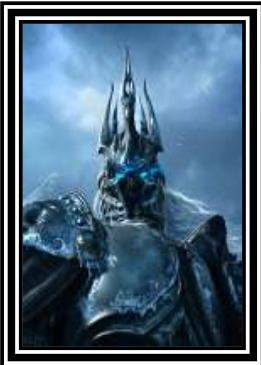
The Gods of the Northern Waste, or Ice Lords, is a group of gods following Vorondil, the Lord of Ice, one of the eldest of all gods in the dimensions of Al’Akwannon. The areas where worshippers of these gods can be found spans a huge range of geography covering more land than any other pantheon. However, this land mass is far more sparsely populated than the southern climes. Vorondil’s actions with Ares, Lord of War have opened a burgeoning alliance with the Olympians. Powers of the benevolent demon prince, Norg’Sria’Zhen, Aeryamoinyen (especially strong in Krystallia), Fjoroth and Sanya Freya all focus their cold based powers on stopping the undead insurgence. Worship is heaviest in the Far West lands, centered in Kaltesvard, in the Deep North around the Tsar Lands and reaching as far south as the great city of Krystallia. The style of worship is very much like barbarian worship during the Dark Ages in Western Europe and runs the gamut from casual worship to fanaticism. There is no holy book for the religion; rather there are various places throughout the north (monoliths, cave drawings, runes, etc.) which have bits and pieces of the pantheon’s history. Worshippers believe that Vorondil created the harsh yet beautiful lands in which these people live
Vorondil (Lord of Ice)
Power Ranking : Supreme God
Greater Deities : Norg’Sria’Zhen (the White Prince)
Median Deities : Aeryamoinyen (the Cold One)
Lesser Deities : Fjoroth (Lord of the Ice Wind), Sanya Freya (Mistress of Frost)
The Morgul Lords

The Morgul Lords are a group of gods worshipped, cursed and sometimes forgotten by the orcs and giant kind throughout Al’Akwannon no matter their geographic distribution. As part of the disruption of things during the tumble toward the Age of Darkness, a small group of orcish heroes discovered their gods were imposters from the outer dimensions and that the lone true orcish god was merely a child. The legend known as To’Garma destroyed the imposter gods, pulled in the orc Mother Luthic from the void, destroying her and transferring her power to the child, Chak’Dor. Additionally, one of the orcish heroes, Loh’Pak, bestowed the knowledge of the ancient orcs (historical champions of the Jo’Rak clan spanning back to the Morgul Age) upon Chak’Dor, creating a true orc god for the first time in millennia. Chak’Dor now drives the orcs toward former glory though he fights against pretenders planted by the Dark Alliance. Allied with Goraknath in the Giantlands in the north and the stealthy maneuverings of the Kobold god Li Ssu anywhere kobolds can be found, they stand together fiercely no matter how sporadic the worship. The largest centers of worship lie within the Imlad Morgul and the Giantlands but follow orcs, ogres, kobolds and other giant and morgul kind no matter where they live. The style of worship is mostly in a warrior fashion since most gods are either war gods or have relations to war. True orcish worshippers are extremely deep rooted in their faith and treat it with near fanaticism while followers of the lesser gods are more loosely oriented
Chak’Dor (the Thunderwielder)
Power Ranking : Greater God
Lesser Deities : Goraknath (the Supreme Giant), Li Ssu (the Robber God)
The Elven Lords

The Elven Lords, or the Eldros, is a group of gods worshiped (or at least acknowledged) by most Elves and faerie folk no matter their geographic separation, though often these come in the forms of godly aspects which differ from region to region and to a certain extent from race to race. The largest centers of worship lie within Lothlorien, the Forests of Rynd and with the Drow dispersed throughout the Underdark. Despite the dark and separate paths taken by the Drow gods, all deities know that they all come from the same origin, and if necessary to stand against the influence of the Dark Alliance will be happier to side with the surface elf deities rather than D’Spayre and his alliance of evil. The elves have their own way of doing things. This has, however, allowed Dark Alliance aspects to gain footholds in both the Drow and more militant surface elf areas. The style of elven worship is mostly in an appreciation and respectful manner with reverence being shown to natural things. For the most part, this is contained within trees, waterfalls, magnificent animals and such for surface dwellers; crystals, bottomless pits, gigantic spiders and the like for Drow. Worshipers respect what their gods stand for and acknowledge their station as creators and protectors. The exception lies in the Underdark, where the Drow worship in a style based upon a strong desire to become a favorite of a particular god through sacrifice, cunning and virtually any other means
Sahalei Morningsun (the Gentle Mother)
Power Ranking : Supreme Goddess
Median Deities : Saurian Thunderwind (Wielder of the Skies), Lorac Darkweaver (the Black Son)
Lesser Deities : Haseisi Greeneyes (Mistress of the Forests)
Demi Gods : Lolth (Queen of the Spiders)
Kings of the Fire Mountain
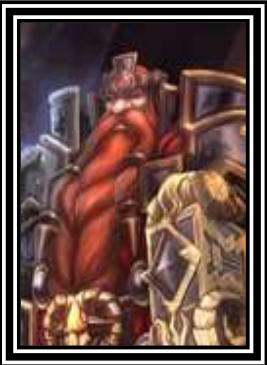
The Kings of the Fire Mountain are a group of gods worshipped by Dwarves and a few other subterranean races allied to the dwarves throughout Al’Akwannon; most notably the Svirfneblin (Deep Gnomes). Due to their highly family oriented and non-trusting nature, the dwarves and dwarven gods alike have kept away the influence of the Dark Alliance and no aspects of these dark gods have slipped into their mainstream worship...yet. The largest centers of worship lie within Silverlode and the Ice Kingdoms, however, the number of dwarves globally is much smaller than the other three elder races and smaller than many of the lesser races as well. This lack of numbers is a primary reason the Dark Alliance has not sought a more persistent onslaught. The style of dwarven worship is similar to that of Christian Crusaders. It is an honorable style of worship and the dwarves especially, rarely forget who protects and provides for them. This is a tradition, even among those who are not true worshippers, and this has kept them a tightly knit and cohesive group throughout the ages. The holy books are actually tablets of stone and precious metals kept in secret chambers deep within mountains. Worshippers believe that Ogon Firehammer created all Dwarvenkind and protects them from the whims of the gods of other races
Ogon Firehammer (Father of Fire)
Power Ranking : Supreme God
Lesser Deities : Kauthar Wonderhand (Artisan of the Gods), Agathos Fatesender (Father of Good Fortune)
Demi Gods : Ergane (Mistress of Craft)
The Lords of Justice
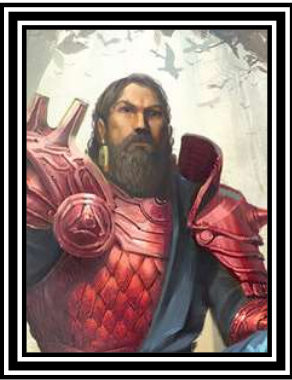
The Lords of Justice are a group of gods heavily worshiped in the far east of Al’Akwannon. The largest centers of worship lie in the Hordelands and the Savage Lands. The style of worship is much like Islam in its most strict and proper form, worshipers prostrate themselves aiming toward the east and recite memorized verses aloud
Din-El (Lord of Justice)
Power Ranking: Supreme God
Greater Deities: Makkari (the Even Handed), Faskir (the Avenger), Ikaris (the Horsemaster)
The Dark Sages
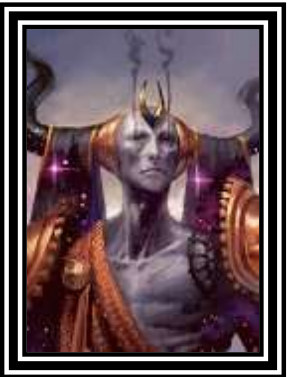
The Dark Sages, or Sages of the Dark Moon, is a group of gods heavily worshiped on the east coast of the Southern Peninsula and various population centers within. The largest centers of worship lie in Jhos, Ungor and many of the large coastal towns and often compete with the worship base of the Destroyers. The style of worship is much like strict Orthodox religions including architecture and ritualistic sacraments. Praying is done by clasping hands in various modes dictated by the individual god or goddess worshiped. Prayers are only spoken aloud when in the presence of an icon of the individual god worshiped
Assara Mazan (the Great Creator)
Power Ranking : Supreme God
Greater Deities : Aija (Goddess of Power), Hecate (the Mystic One)
Median Deities : Titannis (the Honorable One)
The Serpent Lords
The Serpent Lords are a pair of gods who dominate the central jungles of the Southwest Peninsula. Both utilize a great many aspects to achieve diversity and keep chaos at work within various mortal dominions within the vast jungles. The style of worship is very much like that of Aztec and Mayan religions including complex rituals and occasional human sacrifices (usually of enemies or heretics)
Noxicuss (Master of Toxins)
Power Ranking : Supreme God
Median Deities : Thlen (the Spirit of Blood)
The Dragon Lords
The Dragon Lords are a group of gods heavily worshiped among the clans of the northern realm aptly named, the Dragon Lords. There are also concentrations of worshippers on the little known Eastern Continent. Mysteriously, though, there are hidden pockets of worshippers found in the least likely of places. The style of worship is similar in style to that of Buddhism laced with some Mysticism. There are many hidden shrines and ornate temples in areas where worship is strong. Worship by those who are not priests is often quite traditional as followers are constantly making small offerings at altars and shrines. It is said that the dragons appreciate all of the offerings, be they as free as flowers or as expensive as gold. Worshippers and priests alike follow many regimens and traditions, including such things as meditation
Soutan (the Dragon Father)
Power Ranking : Supreme God
Greater Dieties : Takshaka (the Dragon King)
Median Dieties : Hsaio Kung (the River Dragon)
Lesser Dieties : Ling Kuan (the Dragon Chief of Devils)
The Cult of the Ice Dragon
The Cult of the Ice Dragon is a group devoted to the worship of a single demi-god believed to be the most powerful dragon ever to live. Nearly all the worshipers are concentrated in the Great North, and of those, a high percentage reside within the political boundaries of the Dragon Lords. The style of worship is similar to that of archaic Catholicism, in so far as the political infrastructure. However, there are many non-similar sacraments including living and self sacrifice. Praying is done by chanting aloud in the Draconic language, usually in the presence of an idol or other iconic symbol of the faith. There is no known holy book, however, it is known that the demi-god himself strode the Prime Material Plane for a time and has passed down his desires thusly.
Scaathra (Lord of the Ice Dragons)
Type of Being : Worshiped God
Power Ranking : Demi-god
The Cult of the Scorpion Queen
The Cult of the Scorpion Queen is a group devoted to the worship of a single demi-god believed to be a supremely powerful demoness. Nearly all the worshipers are concentrated in the Far East, and of those, a high percentage reside within the the Sea of Dust which is the Scorpion Queen’s protectorate. The style of worship is similar to that of ancient Egyptian gods, including the building of immense structures to glorify her. Praying is done by chanting aloud in Bagoth, the language of the scorpion people, usually in the presence of an idol or other iconic symbol of the faith. The holy book of the religion is an amalgamation of texts taken from the Scorpion Queen herself and named simply the Will.
Bagog (The Scorpion Queen)
Type of Being : Worshiped God
Power Ranking : Demi-god
Thanatar, the Severed God
The Cult of Thanatar is a group devoted to the worship of a demi-god which is comprised of two parts. The cult of the Severed Head worships the more arcane aspects of the god, while the cult of the Body worships the physical aspects. Nearly all the worshipers are concentrated in the southern part of the Far East and Torosia. The style of worship is similar to that of ancient death cults and is highly secretive and has few actual temples. Praying is done silently, placing one’s self into a trance by repeating holy phrases until a nearly hypnotic state is reached. There is no holy book of the religion persay, however there are various ancient texts, each with a unique title, some focused towards the Severed Head and some toward the Body
Thanatar (The Severed God)
Type of Being : Worshiped God
Power Ranking : Demi-god
Niñaubl, God of the Seven Eyes
The Cult of Niñaubl is a group devoted to the worship of a mysterious demi-god of magic. The priests of Niñaubl seem to be more wizards than actual priests and are highly secretive. Unlike most religions, priests do not seek to convert or recruit followers or other priests. It is believed that those worthy of the worship of Niñaubl are summoned by the will of the god himself and thus seek him without the need of proactive testament. Priests and the few worshippers that exist are scattered throughout the realms, usually acting alone on a secret agenda. There are no known established churches, temples or even shrines. The style of worship is mostly quiet meditiation and reverence, often exemplified by their near scientific approach to magic. There are no known holy texts, although some tomes of a more arcane nature are reputed to exist
Niñaubl (God of the Seven Eyes)
Type of Being : Worshiped God
Power Ranking : Demi-god